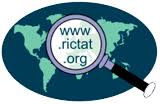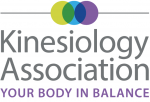MSM is the 4th most plentiful mineral in the body and so essential to life that it is found in every cell of virtually every animal and plant. MSM is basically converted sulphur. MSM as a supplement is usually sourced from pine bark. Never use synthetic MSM. Foods rich in sulphur are eggs, onions, garlic and aloe vera.
MSM is source of sulphur which is an essential mineral in the body. It helps to maintain overall body balance between acidity and alkalinity which is required for balanced health. When you take MSM, your cells become more permeable, enabling your body to quickly wash out any foreign particles in your system. Every twelve hours your body is designed to flush each cell of any unwanted debris. When your diet is deficient, the cell walls become hard and stiff and this hinders fluid flow through the cell walls. How MSM can change this is by softening the cell walls, allowing foreign proteins and free radicals to be washed out of your system. MSM is used by the body to continually create new healthy cells to replace the old ones. Sulfur also plays a part in tissue respiration, the process that oxygen and other substances are used to build cells and release energy.
1. MSM helps our bodies absorb more nutrients (vitamins and minerals). Especially good for helping to absorb Vitamin C.
2. MSM increases oxygen availability to the body.
There are people who have had emphysema, who used an atomizer for breathing and could hardly get out of the chair to walk across the room, who, after about a week of taking MSM, walked a half mile, rested and then walked another half mile. Now that is not because emphysema had been reversed, but because the MSM detoxifies and increases the blood’s circulation of oxygen. MSM helps get oxygen into the blood a lot more efficiently with the same amount of work.
3. MSM helps increase energy.
Energy levels increase with MSM because it helps make the cell walls more permeable. Our cell walls get thicker and more rigid with age; this tends to create a lessening of the amount of nutrients and oxygen that can enter the cell through the cell wall. Also, toxins which get stored in the cell get trapped within the cells because of the lower permeability of the cell wall. When MSM goes into the body the permeability of the cell walls greatly increases, enhancing the absorption of nutrients and oxygen and helping release the toxins which were stuck in cells. When these toxins leave the body, it helps to increase our energy.
4. MSM Supports Blood Sugar. A good example of this at work shows up in diabetics. When their blood carries sugar to their cells, the sugar cannot be absorbed due to the impermeability of the cell wall. Studies show that when MSM goes into the body it causes the cell wall to be more permeable again. The pancreas (which requires sulphur to make insulin) normalizes because it does not work so hard, blood sugar can now be absorbed through the cell walls, helping to balance the blood sugar level. Because sulphur is a component of insulin (the protein hormone secreted by the pancreas that is essential to carbohydrate metabolism), a lack of nutritional sulphur in the diet can result in low insulin production by the pancreas. Studies suggest, in those with diabetes, that the cell wall may be more leathery and thus the absorption of sugar by the cells is greatly reduced.
5. MSM helps the body eliminate toxins including lactic acid build-up from strenuous exercise.
Drinking plenty of water is very important for anyone wishing to have good health. The fact that MSM detoxifies means that you need to keep water moving into the body so that the toxins can be eliminated without stressing other organs of the body, such as the kidneys.
6. MSM helps to dramatically reduces recuperation time from strenuous exercise and long hours of work.
7. MSM helps relieve muscular aches and pains.
8. MSM helps reduce inflammation due to injury or inflammatory diseases such as arthritis.
When the water pressure inside a cell is greater than the water pressure on the outside of the cell, there is inflammation and swelling. (The outer and intercellular fluid pressures are not equal.) MSM enhances the permeability of the cell walls, therefore allowing the pressure on both sides of the wall to equalize, thus relieving the inflammation. MSM takes inflammation out of soft tissue and since pain comes from nerves in inflamed soft tissue, there is often relief from the pain of such inflammatory ailments as arthritis, bursitis, rheumatism and hip dysplasia.
9. MSM helps reduce scar tissue and wrinkles and helps keep the skin more elastic because its collagen stimulating. Collagen levels reduce as we get older. Collagen also supports joints and aids injury healing.
10. MSM helps the hair and nails grow stronger and faster. Rich in keratin (required for hair growth).
11. MSM has been shown to improve mental alertness.
12. MSM has been proven to help in the reduction and even the total elimination of allergies.
13. MSM reduces headaches, cramps and muscle pain caused by hormonal imbalances, for example, PMS. Not advised to begin taking it though during your period – you need to have been getting used to it beforehand since you should not detoxify your body during your period.
14. MSM helps relieve constipation by encouraging bile production in the liver. Bile acts as a laxative in the body.
15. MSM has been shown to help reduce and even eliminate snoring.
MSM is available in 2 forms as a powder supplement and as tablets. It is also available from most good health food stores and online. MSM powder is recommended when adding to juices or smoothies, and tablets are recommended for those that don’t like the taste or for people doing weight training who want to take higher quantities of these branch chain amino acids in pure form to help with muscle growth and repair.













